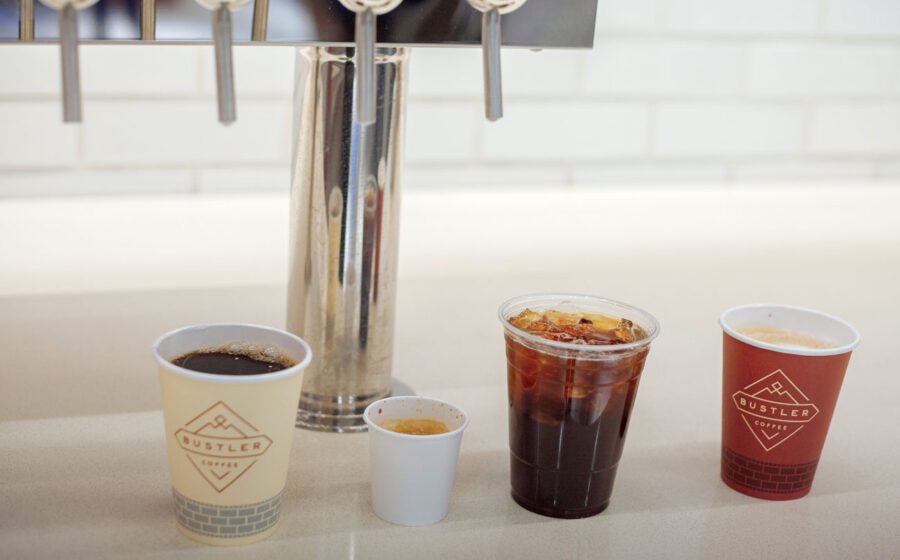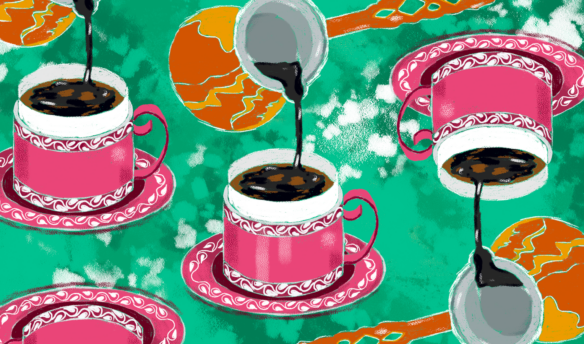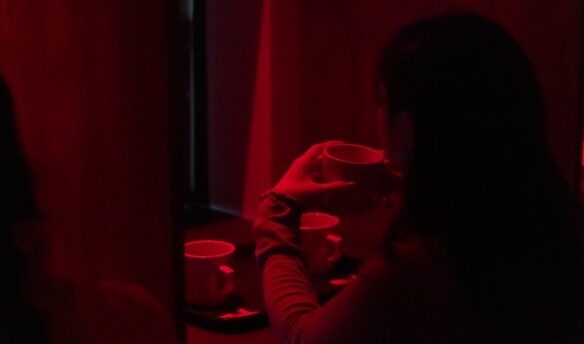[T]he new company Bustler Coffee wants to bring self-service coffee out of the truckstop and into the hustle of Midtown Manhattan. So far, it looks like they’ve pulled it off.
Founder Jaime Rogers’ inspiration for launching Bustler was the nagging problem facing any café: long lines, harried baristas, and misinterpreted drink orders. “You can’t really ever avoid the line—the non-differentiated funnel,” he says. “No one has really ever questioned the method of service in established shops.” Roger’s solution was to get rid of the line by getting rid of the bar, limiting the seating to a few stools, and trimming the staff to two. In their place are super-automatic machines and taps for hot coffee, cold-brew, and even milks.
“We’re trying to break the assumption that self-service lessens quality,” says Rogers. “Self-serve and low quality don’t have to equal each other.” Everything in Bustler is customer-centric because there is no visible space for staff, which is all a little overwhelming at first in its unfamiliarity. Looking at a room with no tables, one counter, a bunch of handles and machines coming out of the wall, and only one staff member carrying a mobile POS can evoke a feeling of, uh, but how do I order a coffee when there’s no barista? This must have been the sensation people felt when first encountering an ATM.
Bustler makes the customer independent. The busy Midtowner with only a few minutes to spare can make a beeline for the drip coffee “wall,” and pour himself a cup from a spout reminiscent of a beer draught pull, while the tourist with a few minutes to linger can head to the super-automatic espresso machine, press two buttons to have the machine make a latte, and then customize it herself with dairy, non-dairy, or syrups. This lack of interaction with a staff person is in part designed to eliminate the misunderstandings of “no I said NONfat milk” and the time is takes to remake incorrect orders. The one front-of-house staff person is the iPad cashier. The price points are comparable to Starbucks and similar cafés that are on every other corner in the neighborhood.
The technology and shop infrastructure involved to make self-serve fancy is pretty impressive. Insulated tubes run from Luxus pots hidden behind the shiny white tile wall to the row of taps; and a dairy bar offers milk fixings and seasonal flavor syrups. The second staff person works the back of house and can refill all products without interrupting the customer experience or flow of sales. Bustler hopes to “address Midtown rush but still with a personal element,” says Roger. The front-of-house person, then, can focus on actually talking to people, showing new customers how to pour cold-brew from taps or use the Concordia super-automatic espresso machine to make a cappuccino, and answering questions rather than trying to engage with customers while simultaneously making drinks. “This focuses staff attention and keeps morale high.” Rogers says. As Bustler’s volume increases they plan to add additional front-of-house staff as needed, but those staff would still occupy roles of guide and cashier rather than barista.
The principal coffee supplier for Bustler is the Brooklyn roasting operation Pushcart Coffee, where Rogers is also an investor. Even though Bustler caters to busy Midtowners who are maybe more concerned with speed than with a coffee’s provenance, the goal of the café is to provide convenience that does not compromise quality. The quality of the beans being used to make all the coffee served at Bustler is undeniably exceptional. Pushcart sources its coffee carefully by frequently traveling to origin. The featured single-origin coffee drip coffee is sourced and roasted by Cesar Martin Vega’s Café Integral from farmers he knows in his native Nicaragua. With bean quality established, the question then is if the automatic, customer-proof equipment can translate that quality into the cup. The latte from the super-automatic was tasty but certainly not the same as one poured by a professional barista, although for the customers in Manhattan’s Midtown it could be much the same difference. In one sense Bustler is a transition venue, a place where customers seeking speedy caffeine between meetings can discover single-origin specialty coffee.
Bustler’s limited signage emphasizes that its coffee is all roasted by local small businesses. Additional New York purveyors include Metro Chai iced tea and matcha, Hudson Valley Fresh dairy products, Kelvin Slush, and Nuchas empanadas. Featuring local craft products is by no means a new business model in New York, but it’s rare for Midtown, especially when it’s paired with an innovative self-serve format presented with an elevated aesthetic.
There is a learning curve to getting coffee at Bustler, but not such a steep one that it can’t be overcome in the first visit. Bustler took the upscale self-serve aesthetic that has been proven successful by frozen yogurt chains like 16 Handles and by eateries like Pret A Manger and applied it to coffee. No, the role of barista as coffee craftsperson is not becoming obsolete. But, argues Rogers, “there is a conflation of barista with specialty coffee. Bustler is trying to break down a conflation that isn’t necessary.” Maybe. At Bustler it’s being omitted in the name of expediting the Midtown morning coffee rush.
—Rachel Northrop is a writer based in New York City. She is the author of When Coffee Speaks.

















